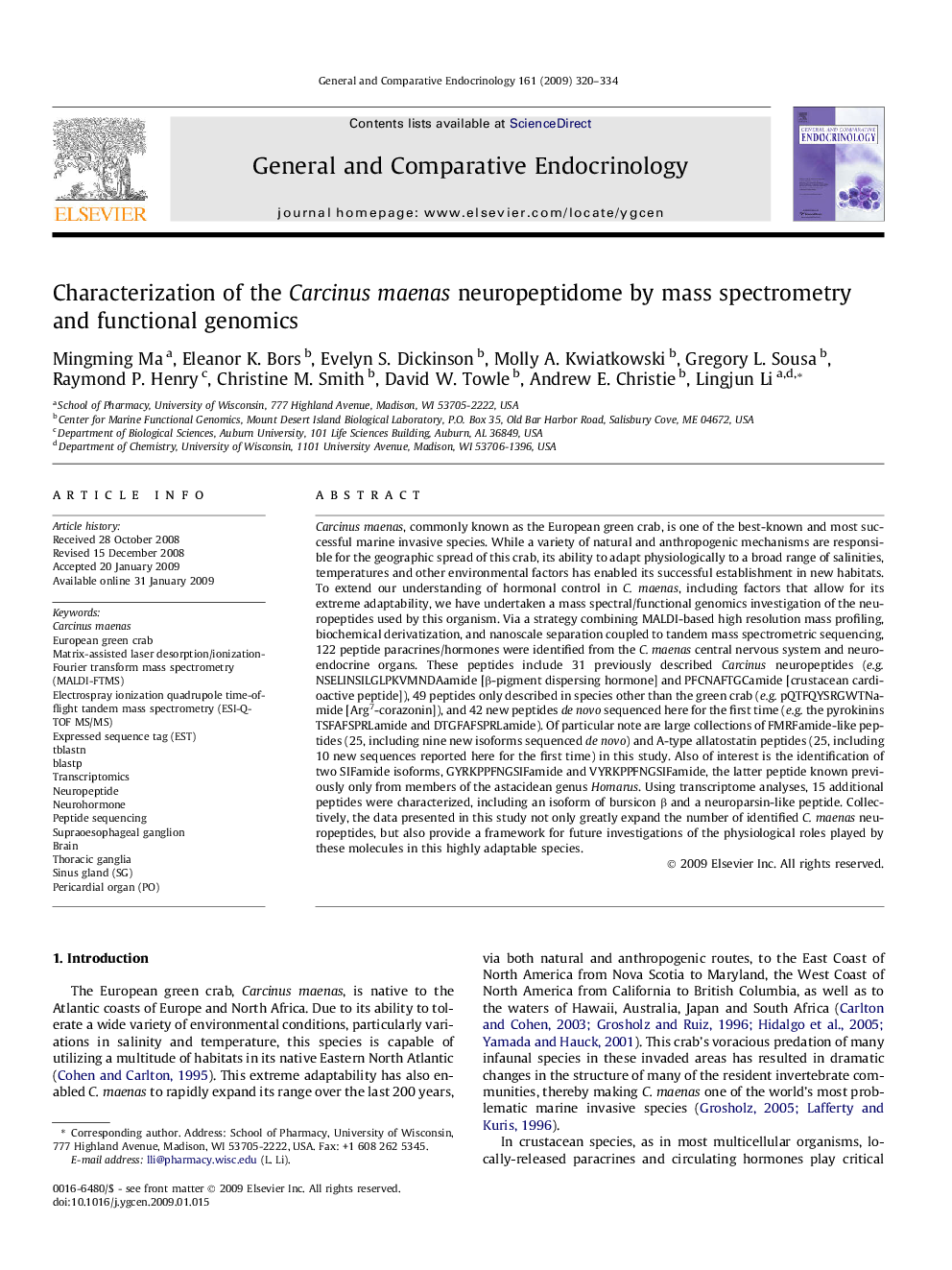| Article ID | Journal | Published Year | Pages | File Type |
|---|---|---|---|---|
| 2801538 | General and Comparative Endocrinology | 2009 | 15 Pages |
Carcinus maenas, commonly known as the European green crab, is one of the best-known and most successful marine invasive species. While a variety of natural and anthropogenic mechanisms are responsible for the geographic spread of this crab, its ability to adapt physiologically to a broad range of salinities, temperatures and other environmental factors has enabled its successful establishment in new habitats. To extend our understanding of hormonal control in C. maenas, including factors that allow for its extreme adaptability, we have undertaken a mass spectral/functional genomics investigation of the neuropeptides used by this organism. Via a strategy combining MALDI-based high resolution mass profiling, biochemical derivatization, and nanoscale separation coupled to tandem mass spectrometric sequencing, 122 peptide paracrines/hormones were identified from the C. maenas central nervous system and neuroendocrine organs. These peptides include 31 previously described Carcinus neuropeptides (e.g. NSELINSILGLPKVMNDAamide [β-pigment dispersing hormone] and PFCNAFTGCamide [crustacean cardioactive peptide]), 49 peptides only described in species other than the green crab (e.g. pQTFQYSRGWTNamide [Arg7-corazonin]), and 42 new peptides de novo sequenced here for the first time (e.g. the pyrokinins TSFAFSPRLamide and DTGFAFSPRLamide). Of particular note are large collections of FMRFamide-like peptides (25, including nine new isoforms sequenced de novo) and A-type allatostatin peptides (25, including 10 new sequences reported here for the first time) in this study. Also of interest is the identification of two SIFamide isoforms, GYRKPPFNGSIFamide and VYRKPPFNGSIFamide, the latter peptide known previously only from members of the astacidean genus Homarus. Using transcriptome analyses, 15 additional peptides were characterized, including an isoform of bursicon β and a neuroparsin-like peptide. Collectively, the data presented in this study not only greatly expand the number of identified C. maenas neuropeptides, but also provide a framework for future investigations of the physiological roles played by these molecules in this highly adaptable species.
